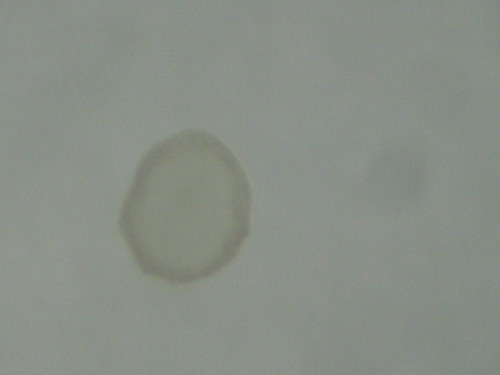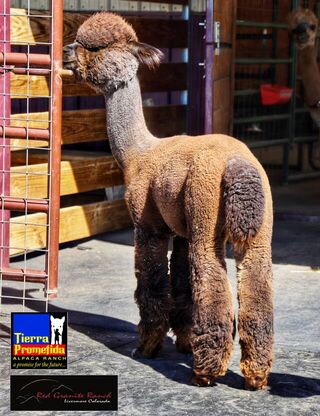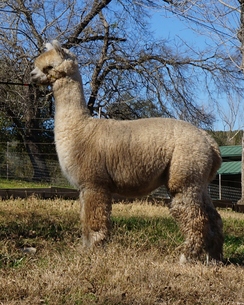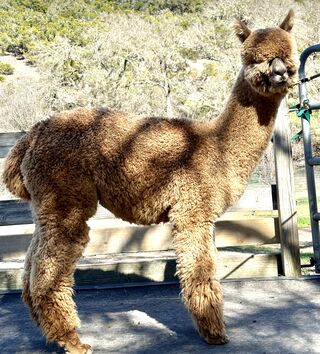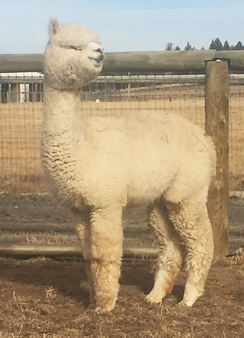Who's Afraid of ET?

In July of 1982, I returned from a 6 week student tour of Europe. Kern (my boyfriend at the time) met me at the airport telling me all about the new film, ET. Of course, we went to see it and loved it! As we all know, it was the story of a young boy, Elliot, who finds an extraterrestrial (ET) stranded on Earth. ET just wants to get home, and Elliot has to find the courage to rescue ET from the authorities who capture ET. Essentially, “the man” is terrified of this little harmless extraterrestrial and the alien technology that brought him in to Earth. Eventually, Elliot is able to help ET find his way home. This movie is part of the fabric of my life. So when I hear ET…guess what I’m thinking of?
What is a movie summary doing in an alpaca newsletter? Well, we have our own ET, and there are interesting parallels. Our ET is Embryo Transfer, which is also exciting and terrifying at the same time. So, what exactly is ET? To quote Jane Vaughn, founder of CriaGenesis in Australia: “In camelid terms…a donor female is mated naturally, fertilization of the egg occurs in her oviduct, she incubates the embryo for a week, then the embryo is flushed out of her uterus and placed into the uterus of a recipient female, who has been synchronized to ovulate in parallel with the donor. The recipient then incubates the embryo for the rest of the pregnancy.”
What are we afraid of?
- Is the procedure safe for the animals?
- Is doing ET ethical?
- Do the costs and difficulty of the technology make it only practical for the larger, wealthier farms?
- And if so, is it fair?
- Does using ET decrease the variability of the gene pool and is it going to increase inbreeding?
- If ET improves the fiber quality across the national herd, do alpacas become just a fiber industry? If so, where is the value in breeding the animals?
- Isn’t ET going to flood the market with alpacas?
The answers for many of these questions can be found by observing what has happened with other livestock industries that utilize ET, and by instituting some important guidelines.
- Is the procedure safe for the animals?
- Several veterinarians have been fine tuning a non-surgical procedure for ET that has been very safe and very successful. (Jane Vaughn, Julio Sumar, Paul Taylor, and Jorge Reyna are several of them). Since the donors for ET are the best stud females, safety has been a top priority from the beginning.
- Is doing ET ethical?
- In my opinion, if the animals are treated kindly and the conditions are as low stress as possible, there are no problems with the ethical treatment of the animals. If the embryos are treated respectfully and not needlessly discarded, there is no ethical issue with the respect for life. And if the rules of the individual organizations are followed, there is no problem with the ethics of the governing organizations.
- Do the costs and difficulty of the technology make it only practical for the larger, wealthier farms?
- That may be true in the beginning but according to Jude Anderson and Al Cousill of Pucara International who were one of the initial farms involved in ET in Australia, that changes over time. In their experience, as more breeders got involved, the cost came down substantially.
- It also makes it more practical to work together to benefit the entire industry for the improvement of the breed as a whole.
- And if so, is it fair?
- I love the way Peter Kennedy and Robert Gane of Canchones Alpacas in Australia have worked out their ET program in such an equitable way. It works out so that production and expenses are shared. That way, both they and their clients benefit.
- Does using ET decrease the variability of the gene pool and is it going to increase inbreeding?
- Not necessarily. If you think of the ELITE females that would be used for ET in much the same way that we currently use ELITE stud males, their contribution to the genetic pool would be similar. Inbreeding would be just as easily avoided then as it is now.
- Using Embryo Transfer does not necessarily mean using line breeding.
- If ET improves the fiber quality across the national herd, do alpacas become just a fiber industry? If so, where is the value in breeding the animals?
- Ultimately, the point in breeding alpacas is, in fact, the fleece. In most livestock industries, only a few elite animals do most of the reproducing while the rest provide the saleable end product. The value in breeding would continue to be to produce alpacas with large volumes of high quality fiber, rather than have those with a few pounds of mediocre fiber.
- Embryo Transfer could actually be most valuable in creating “seed stock” by using some of the most valuable animals in the national herd.
- Using the most reliable science (including EPD’s based on the most reliable DNA verification of parentage available) to help choose those animals to use as donors, will help insure sound breeding decisions.
- Isn’t ET going to flood the market with alpacas?
- The market will not be flooded with alpacas using embryo transfer as long as the animals used as recipients or surrogates, are required to be “registered alpacas”. Using llamas or unregistered alpacas could be a problem
The possibility of using Embryo Transfer is very exciting, but with a little education and some reasonable regulations, it isn’t so terrifying either. It may just be the way to use our best females to their greatest advantage and to amplify their genetics.
Tuesday, January 16, 2024

